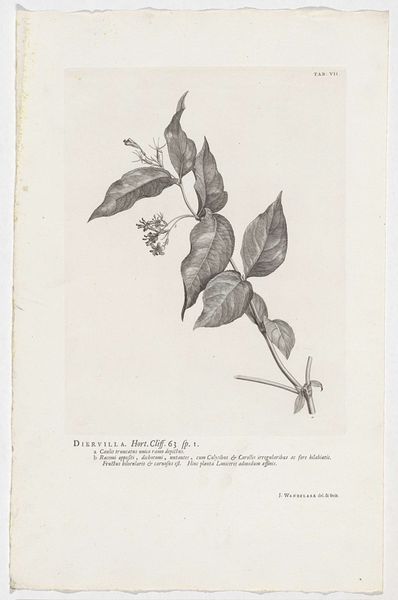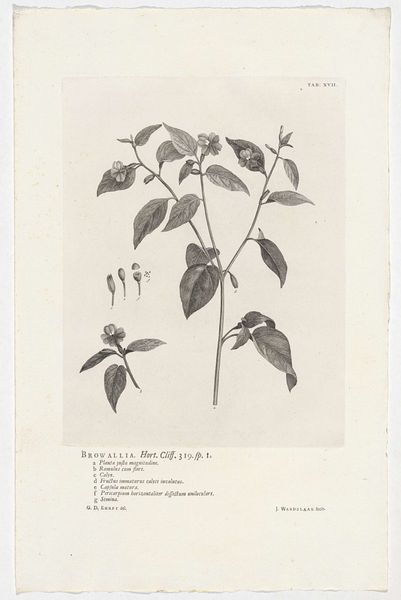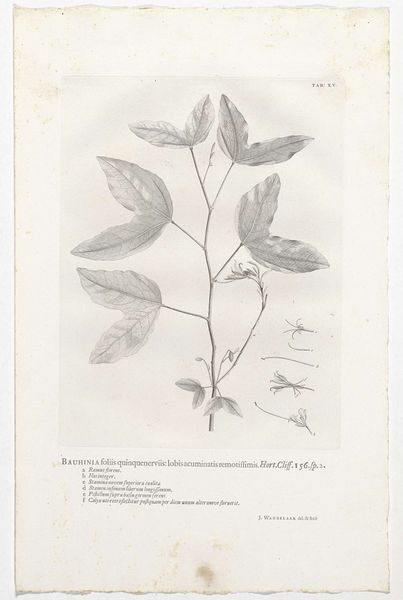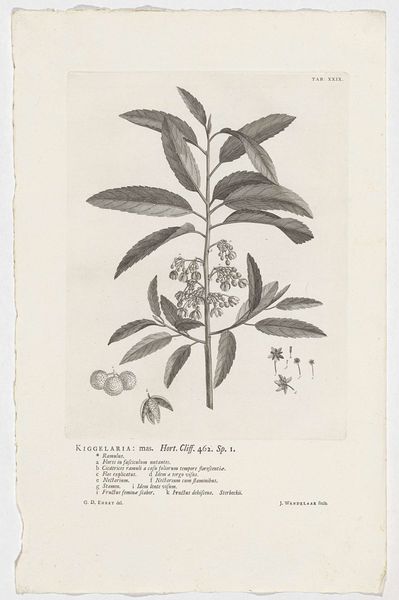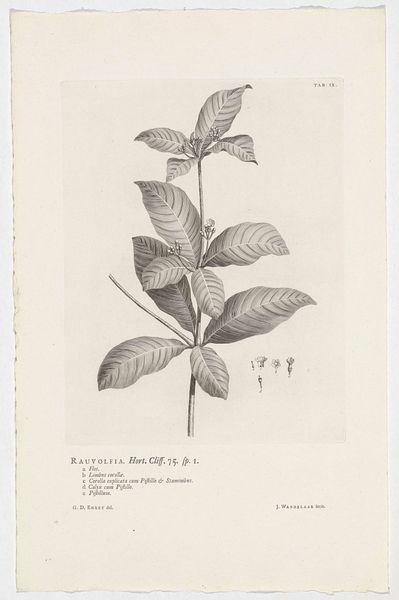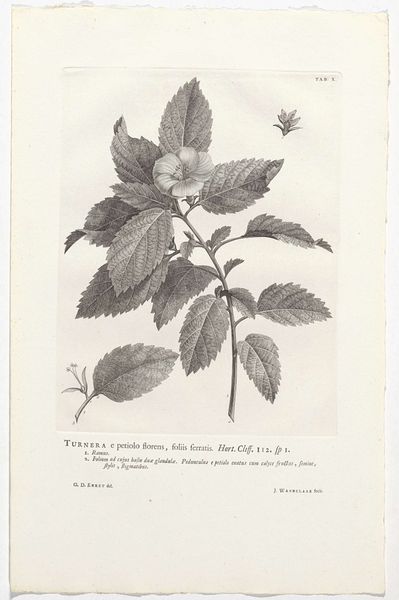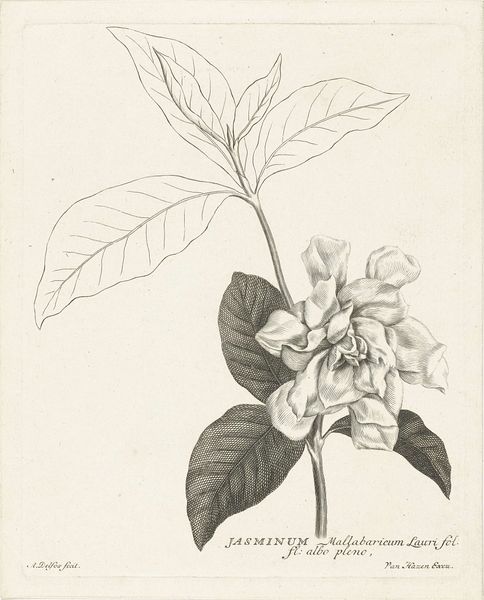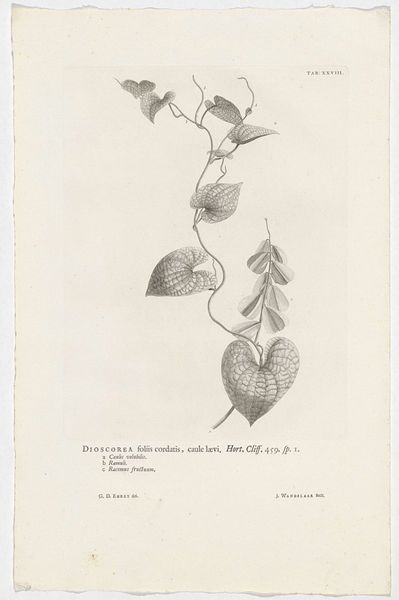
drawing, print, ink, graphite, engraving
#
photo of handprinted image
#
drawing
# print
#
pencil sketch
#
old engraving style
#
ink
#
graphite
#
academic-art
#
remaining negative space
#
engraving
#
botanical art
Dimensions: height 286 mm, width 220 mm
Copyright: Rijks Museum: Open Domain
Curator: It's immediately striking, isn't it? Almost ethereal. There's a stark beauty in its simplicity. Editor: Indeed. This is "Hernandia sonora" by Jan Wandelaar, dating back to 1738. What we're looking at is an engraving, likely crafted with ink and graphite, residing here in the Rijksmuseum. Curator: Knowing that it is an engraving allows us to consider the labor involved in this sort of botanical documentation at the time. Think of the training, the tools, and the sheer meticulousness demanded. Editor: Precisely! Botanical art served a critical purpose in the 18th century, furthering scientific classification. Engravings, being reproducible, disseminated knowledge and imagery to a wider audience, influencing both scientific communities and popular understanding of the natural world. Consider how the culture and scientific institution impacts artistic process and art reception. Curator: Note also the deliberate use of the remaining negative space. This piece wasn't merely about portraying the plant; it was about conveying scientific accuracy while manipulating the eye. We get a feel for the plant’s physical characteristics, texture, and how these translated via this mode of production. Editor: And think about the context in which it was produced. European powers were expanding globally. Depictions of flora from the colonies served as visual currency and furthered both scientific study and perhaps, subtly, colonial power. This ties into the art's public role, both informative and ideologically laden. Curator: It's fascinating how the academic style, requiring this hyper-realistic portrayal, serves the needs of botanical documentation while providing artistic choices. What seems objective has material roots, so to speak. Editor: Absolutely. Wandelaar's engraving isn't just a depiction of a plant, but a confluence of scientific endeavor, artistic labor, and the socio-political forces that shaped the age of exploration. Curator: Looking at it this way reveals the confluence of skill, context and intent behind it. It encourages an understanding of not just WHAT is being portrayed but HOW, for whom and why. Editor: For me, examining "Hernandia Sonora," it opens the door to asking who the botanical imagery served in society, what the scientific processes communicate and mean for us today, and how this intersects with labor. Thank you for offering these perspectives.
Comments
No comments
Be the first to comment and join the conversation on the ultimate creative platform.
